The lens of history tends to be rose-colored. Selective memory – or remembering the good times while forgetting the bad ones – is a curious side effect of nostalgia, and it helps explain why it’s such a powerful feeling.
It’s true for race fans, who often long for the way things once were while ignoring the fact that across the world of motorsports, the racing is closer and more competitive now than it has ever been.
To a lesser extent, it can even be true for sim racers. While the constant advancements in technology, graphics, and content mean racing games keep getting better, there can also be a sense of wonder with remembering the old days, like your first race, your first win, and your best strategy moves from years past.
This weekend was a perfect storm of nostalgia on iRacing as they hosted the Road America 500: an endurance race with the IMSA sports cars from the late 1980s. It’s one of those bygone generations that racing fans remember fondly, between the power-packed GTP prototypes and the diverse GTO class, with cars like the Audi 90 – an all-wheel drive crossover from the rally world that dominated sports car racing on debut in 1989.
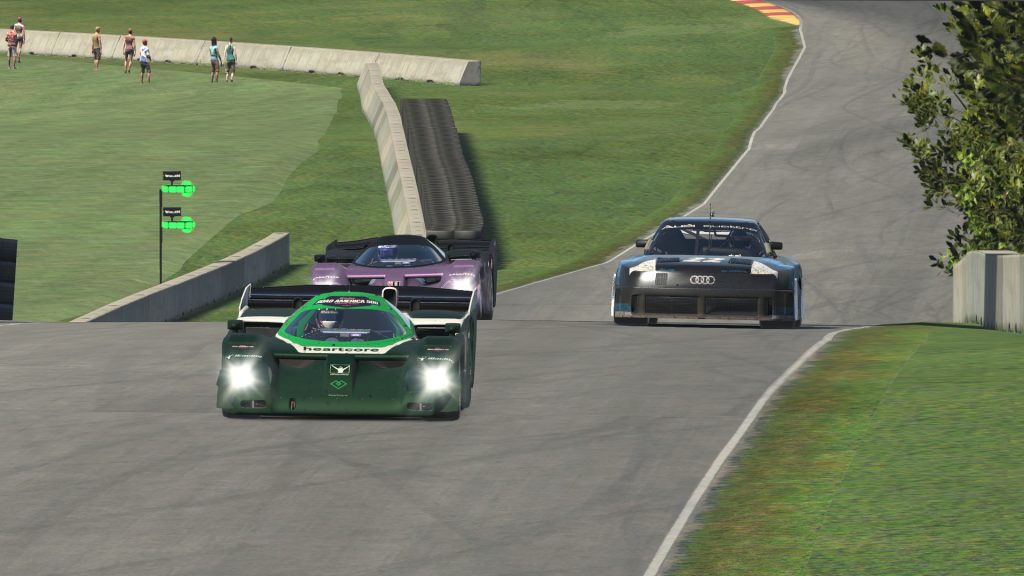
Both cars are difficult to drive, no doubt. I discovered that during my Summer Road Trip in 2018, when a week driving the Audi featured missed shifts, off-track excursions, and collisions with out-of-control prototypes.
Because of that challenge, this event wasn’t met with the same popular acclaim as iRacing’s other featured events. Rather than the thousands of teams that the Daytona 24 and Sebring 12 Hour races attract, just a few hundred brave souls – many running solo – tried to tame these classic cars during the weekend.
Among them were me and my longtime teammate Karl Modig, with whom I’ve enjoyed a number of successes in our endurance racing history together. When we first teamed up eight years ago, iRacing was still a somewhat niche sim, and a long way from its post-pandemic boom.
In those days, it wasn’t uncommon for us to end up in the top split of big events, competing alongside the fastest drivers on the service. While we’ve since been relegated, often in the fourth or fifth split against drivers very much our own speed, a chance to return to the top split would be a throwback of its own, and a chance to see how far we’ve come over all these years.
And so it was. With a lower turnout for this event, even in the most popular Saturday morning timeslot, our car took to the virtual racetrack against the top-split talent. We had to wonder: would we be totally outmatched, or would our years of experience in endurance racing – despite our combined lack of experience in the Audi 90 GTO – offer the secrets to success?
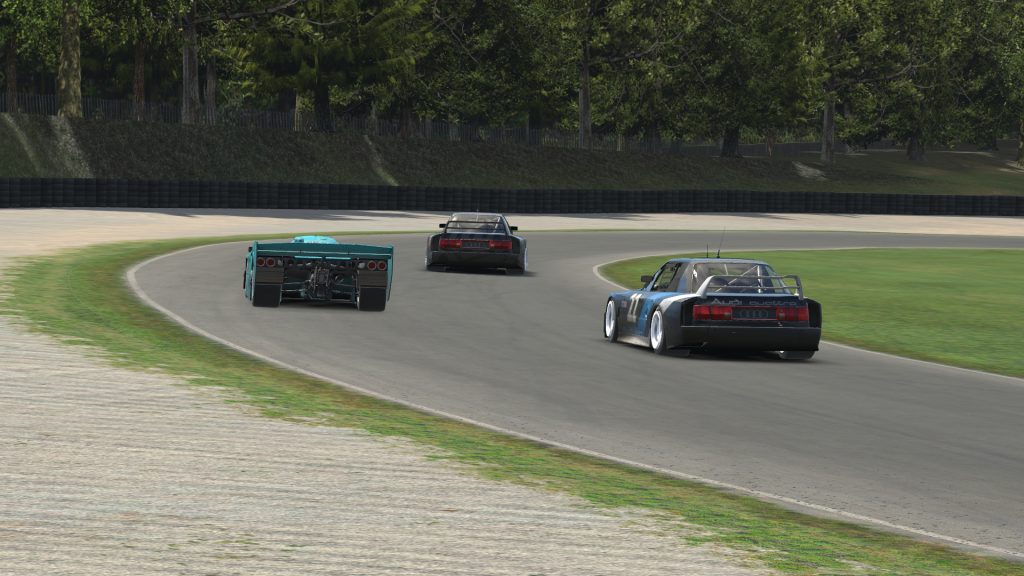
A Weary Warm-Up
In the week before the race, Karl and I had put in some practice together, but as I learned the hard way in my last time driving this old and unforgiving car, there’s no substitute for actual race experience.
During those moments when a close battle heats up, or prototypes pass on all sides, or fatigue sets in, it’s easy to lose focus and make mistakes. So it was better, I thought, to get those mistakes out of the way in a one-off sprint race than wait until the 500-mile, nearly four-hour enduro, when the pressure would surely be even greater, top split or not.
On Wednesday night, I joined a well-populated Kamel GT race session, filled with both that series’ small group of passionate regulars along with moonlighters like myself who wanted some extra reps before the main event over the weekend.
The first step was qualifying, where I’ve had tough luck lately. In the Bathurst 12 Hour races over the past two years, mistakes on my qualifying laps left our team starting deep in the field. Last year, it put us in the path of a mountaintop track blockage, although we soldiered home many laps down. This year, an erratic mid-pack Lamborghini forced me off the road and out of the race in the second hour.
That qualifying carelessness carried over into this race as well. A missed shift at the end of my first lap ruined both laps and put me tenth out of 16 cars, and right in the middle of the pack, where any mistakes – by me or others – would be magnified.
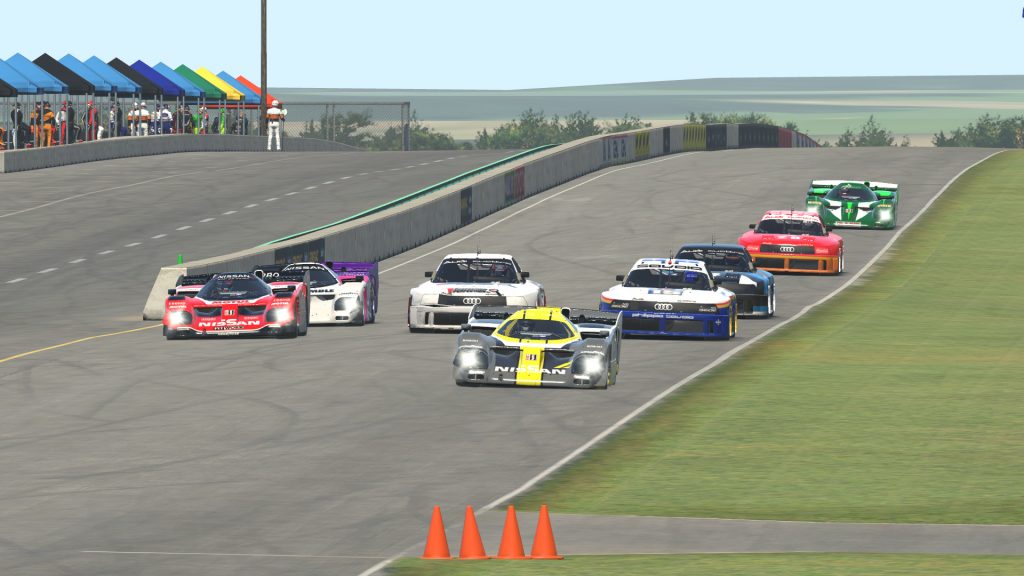
Fortunately, this race had a clean start among the Audi field, and I settled into ninth, at the back of a five-way battle for position. Occasional missed shifts kept me from making much forward progress, but I was able to save fuel while riding behind other cars, which I hoped would save me time in the pits later on.
By the midway point of the one-hour race, the cars in my pack began to make their pit stops, and eventually, it was just me with clear track ahead and only occasional prototype traffic zipping by from behind.
In those less stressful conditions, the mistakes seemed to vanish, and after I made my stop, I was two seconds ahead of the cars that led my group earlier. But the race wasn’t over yet – no, not by any means.
As those quick cars closed in on me, the mistakes returned, threatening to throw away my advantage earned in the pits. The costliest was a missed shift with two laps to go that let another Audi get alongside into the turn 5 braking zone.
But instead of folding, I focused. I held strong around the outside over the next two corners and got back in front by the turn-7 kink. After a side-by-side battle for position, all while Nissan traffic filled my mirrors, I had come out ahead with a top-five finish to show for it.
As if a switch had flipped, I had proven to myself that I could handle the pressure of those hectic situations. If this spur-of-the-moment race was a pop quiz, it had given me a cheat sheet to use for the weekend’s final exam.
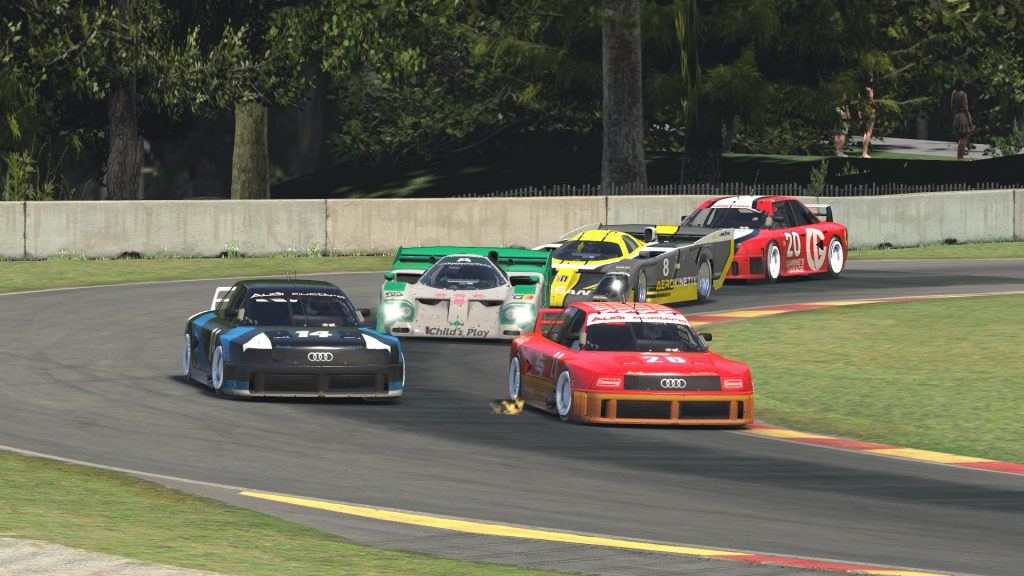
A Promising Start
When race day arrived, I felt a sense of calm and confidence, even after we discovered our top-split fate. While we certainly didn’t expect to win, a top five felt within reach if everything went our way.
And if that sounds like overconfidence, then it may be because we also had a secret strategy in mind. While it was a 500-mile or 124-lap race, only the Nissan prototypes would cover that distance. I calculated that the top Audis would likely do no more than 108 laps, which could be evenly divided into four 27-lap stints.
As I learned during my midweek warm-up race, 27 laps was possible, but only with some disciplined fuel saving throughout a run. However, Karl and I were committed to saving fuel and cutting out a late-race pit stop, and we hoped for a repeat of our last big endurance race success in the 2021 Petit Le Mans, when our GT competitors seemed to miss the obvious strategy and gave us the upper hand en route to a second-place finish.
Of course, before we ever had to worry about executing our race strategy, we had to qualify, and I was eager to put my Bathurst blunders and misshift missteps behind me. An off-track at the Kink on my first lap felt like history repeating itself, but my second lap was within a tenth of my fastest practice lap of the week, and it was good enough for 12th on the grid of 24 Audis.
Thanks to some contact in front of me on the first two laps of the race, I found myself inside the top ten, and from there, I settled into a rhythm in my first stint, not overly concerned about my pace as long as I could hit our fuel number.
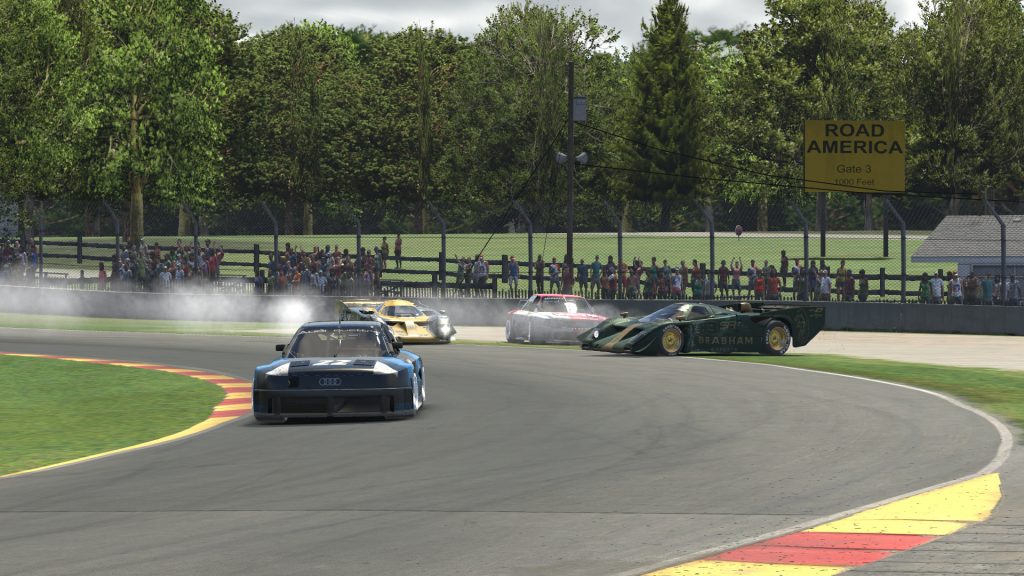
As our competitors made their first pit stops a lap or two before us, Karl and I remained quietly confident, while also confused at how so many teams had miscalculated – or, perhaps, not calculated – the quickest way to the finish.
No matter, I continued through my second stint climbing up to sixth place and riding just behind a couple of cars that we knew would have to make an extra stop at the end.
But as the race neared the halfway point, I was rudely met by a throwback I had hoped would stay in the past: a Nissan gone wild.
Entering the final corner on lap 48, I hugged the inside of the track, hoping to discourage the prototype behind me from passing there, or at least forcing him to take the long way around.
However, he seemingly expected me to fade to the outside and forced his car into a gap that didn’t exist, spinning us both into the gravel trap. (His status as a prominent league steward who typically hands down punishments for avoidable contact was an irony not lost on the race’s broadcasters.)
Our car was damaged and slightly down on top speed, but the handling was still okay, so I completed the final few laps of my stint before pitting for some quick repairs and handing off to Karl.
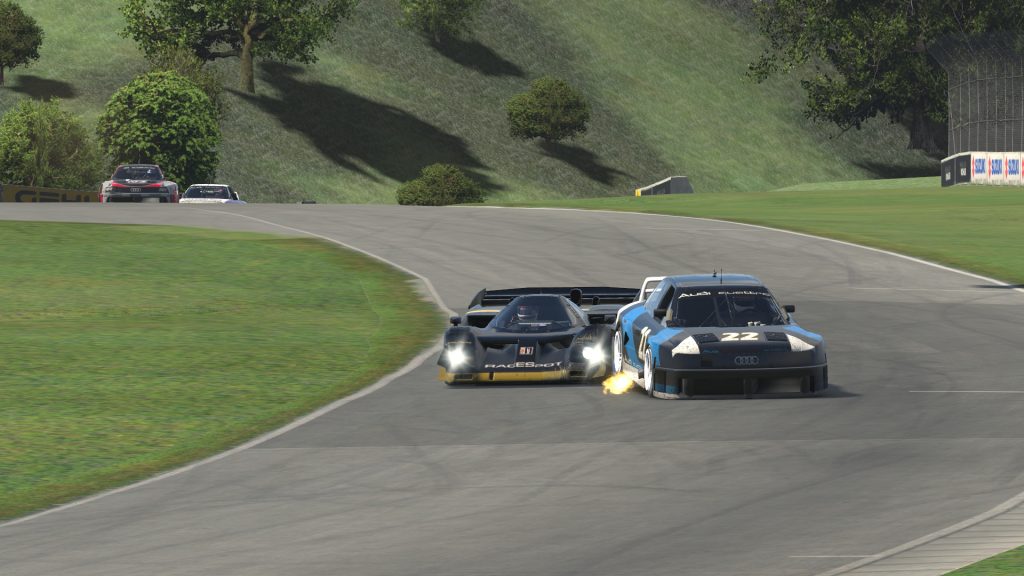
Fighting From Behind
In his first ever racing experience with this car, he got off to a hesitant start, prompted in part by me telling him about all the slippery corners on the hot track.
But after ten laps or so, he was consistently running lap times in the 2:07s, just as I had in my previous stint, and on par with the cars around us.
Although we had lost time during my spin, we were still running a solid seventh and thinking a top five was in reach as long as our strategy played out as expected. Later in Karl’s stint, an Audi ahead of us crashed out – also at the hands of a wayward Nissan – which only boosted our once-shaken confidence about our potential result.
During our final pit stop, I got back in the car and settled into one of the most unusual battles a racer can experience.
I wasn’t bumper-to-bumper with anybody. In fact, the next closest cars were more than 20 seconds ahead of me. But knowing they would have to pit one more time, it was a fight for positioning that we hoped would play out in our favor.
Even though I couldn’t see them on track, I still felt the pressure, and as Karl shared the gaps between us – growing by a second every few laps with faster drivers behind the wheels of our opponents’ cars – I began driving even closer to my own limits, pushing the car deeper into the braking zones and getting back to the throttle sooner to pick up the pace.
It’s the sort of situation that would have almost certainly forced a mistake out of me earlier in the week, but this time, I stayed cool and consistent.
That approach was rewarded when the first car ahead of us made their final stop and emerged more than five seconds behind. Our top five was in hand, but could we do even better than that?
Karl and I both figured it was unlikely, as the fourth-place car had built a nearly 30-second gap that seemed safe given the scant splash of fuel they’d need. But when they pitted with three laps to go, Karl narrated their slow trek down the pit lane… all the way until we passed them.
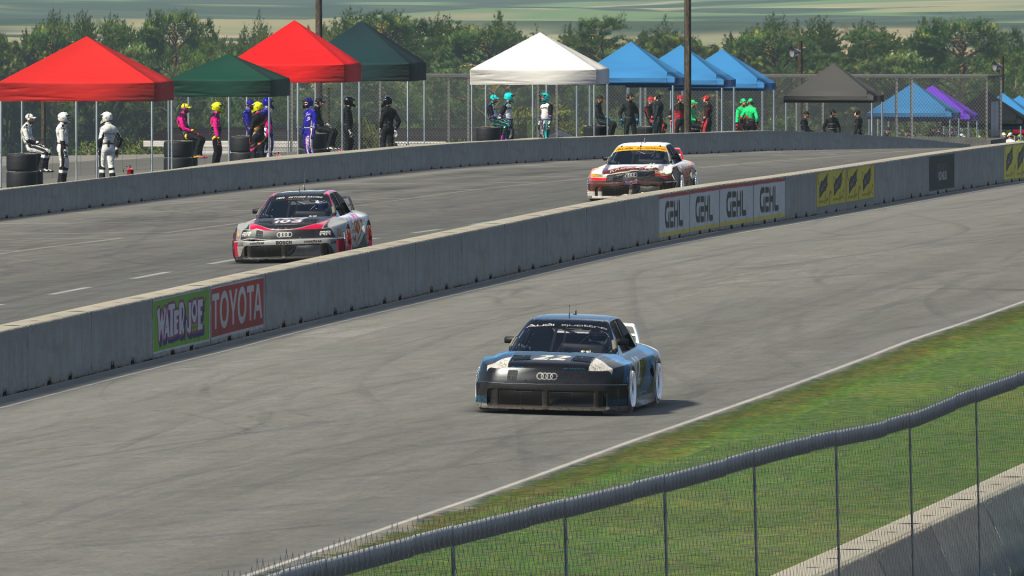
They also came back on track several seconds behind us, and in this race, I didn’t have to worry about those faster cars bridging the gap to my back bumper in the closing laps.
Our strategy and clean driving – that one mid-race incident aside – had elevated us to an impressive fourth-place result. Karl and I estimated we missed maybe three shifts each all race, which was a huge improvement from where we started earlier in the week, unpracticed and rough around the edges.
While it wasn’t our best ever result together, I told Karl on the cooldown lap that it was one of my favorite races we’ve done, right up there with our surprise podium in the Bathurst 1000 and our lone GoT Endurance Series victory in which we also used a sneaky strategy play to get up front.
The nice thing about nostalgia is that as time goes by, we tend to forget the negatives and preserve the positives of those memorable moments. A few years from now, we might not even remember our spin in this Road America 500, and instead celebrate our strategy and speed in a return to top-split endurance racing.
Who knows if and when we’ll be on such a big stage again, but for now, I’m happy to keep a rosy remembrance of this week and this race when old cars became new again and, at least for a while, my own mistakes became a thing of the past.